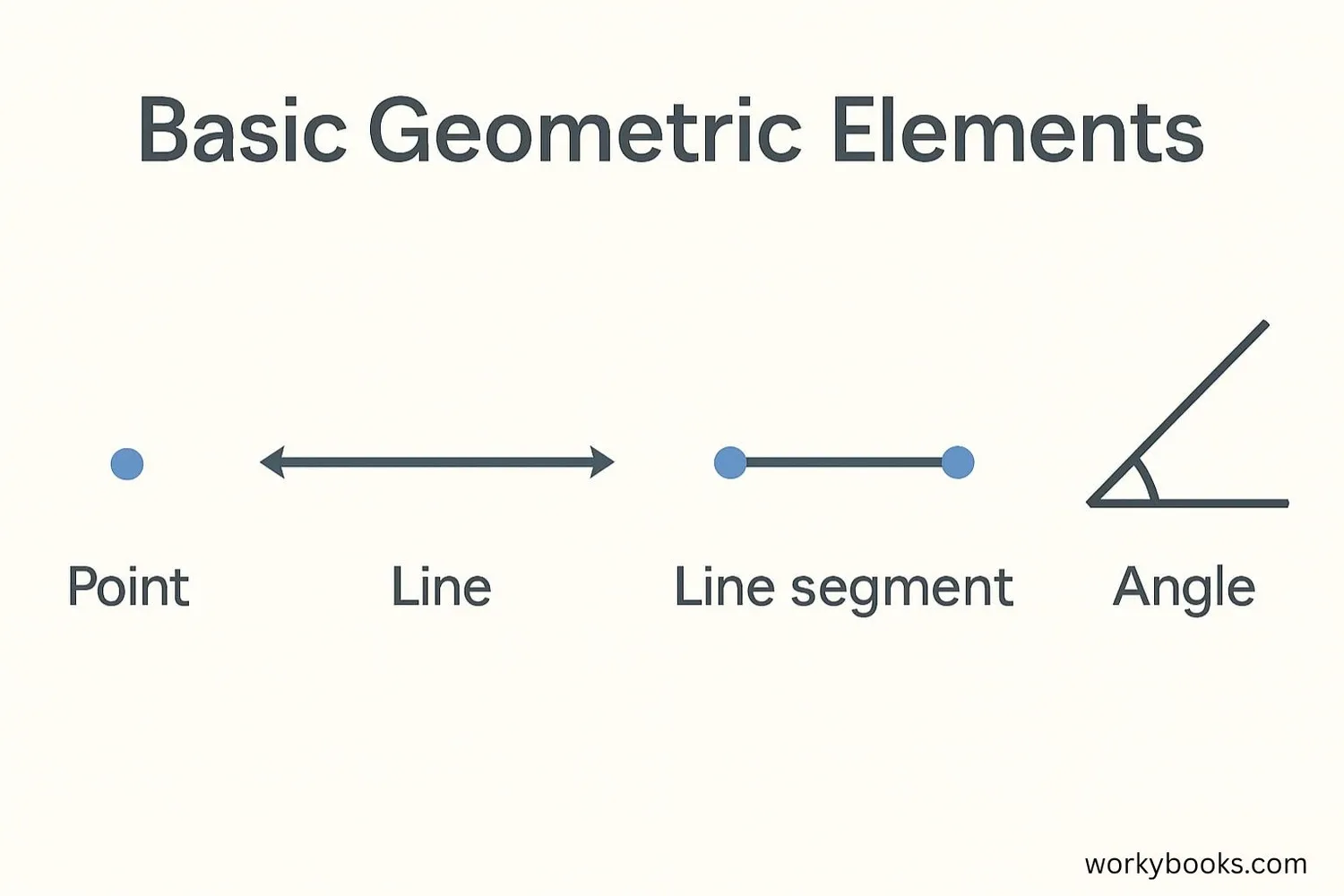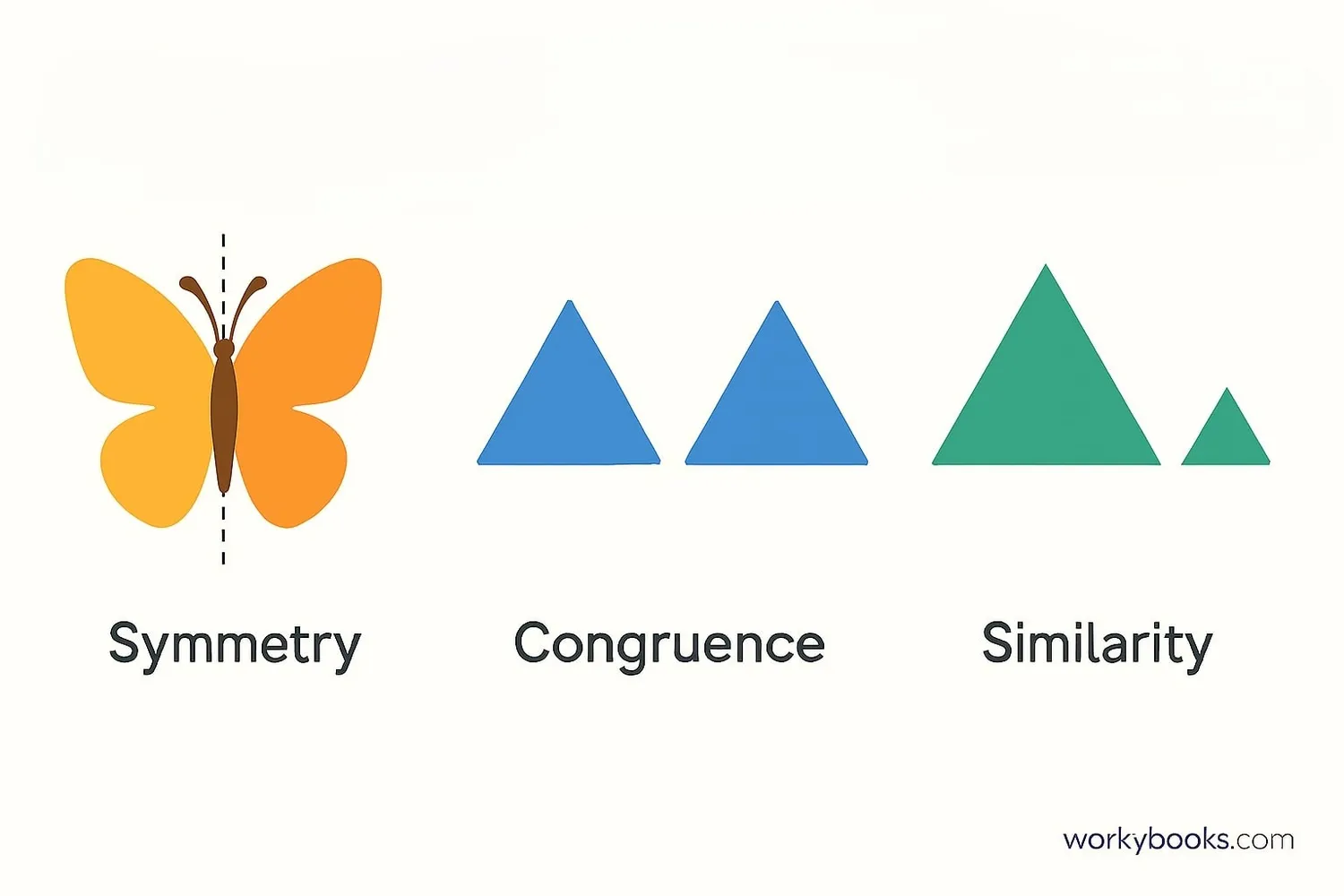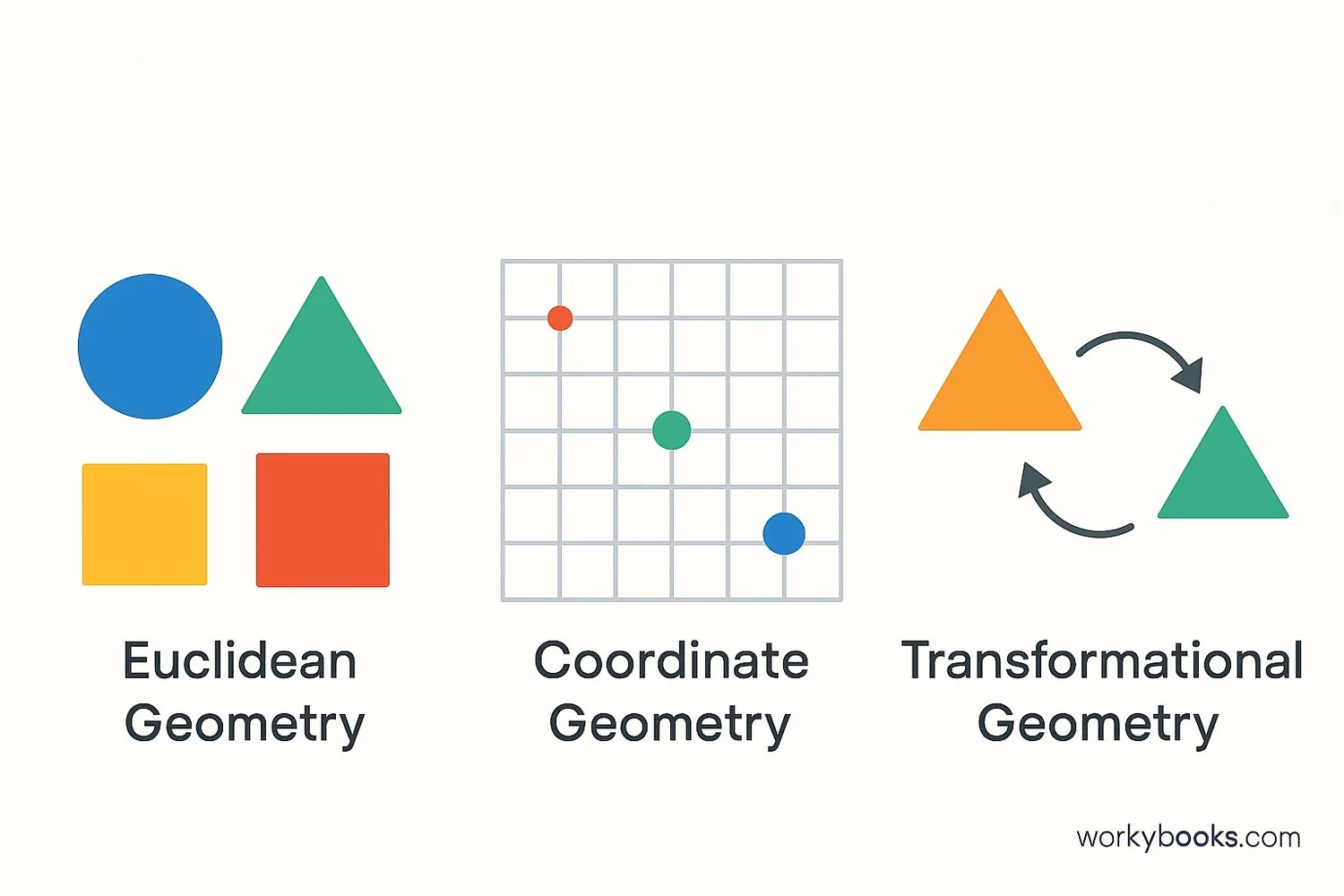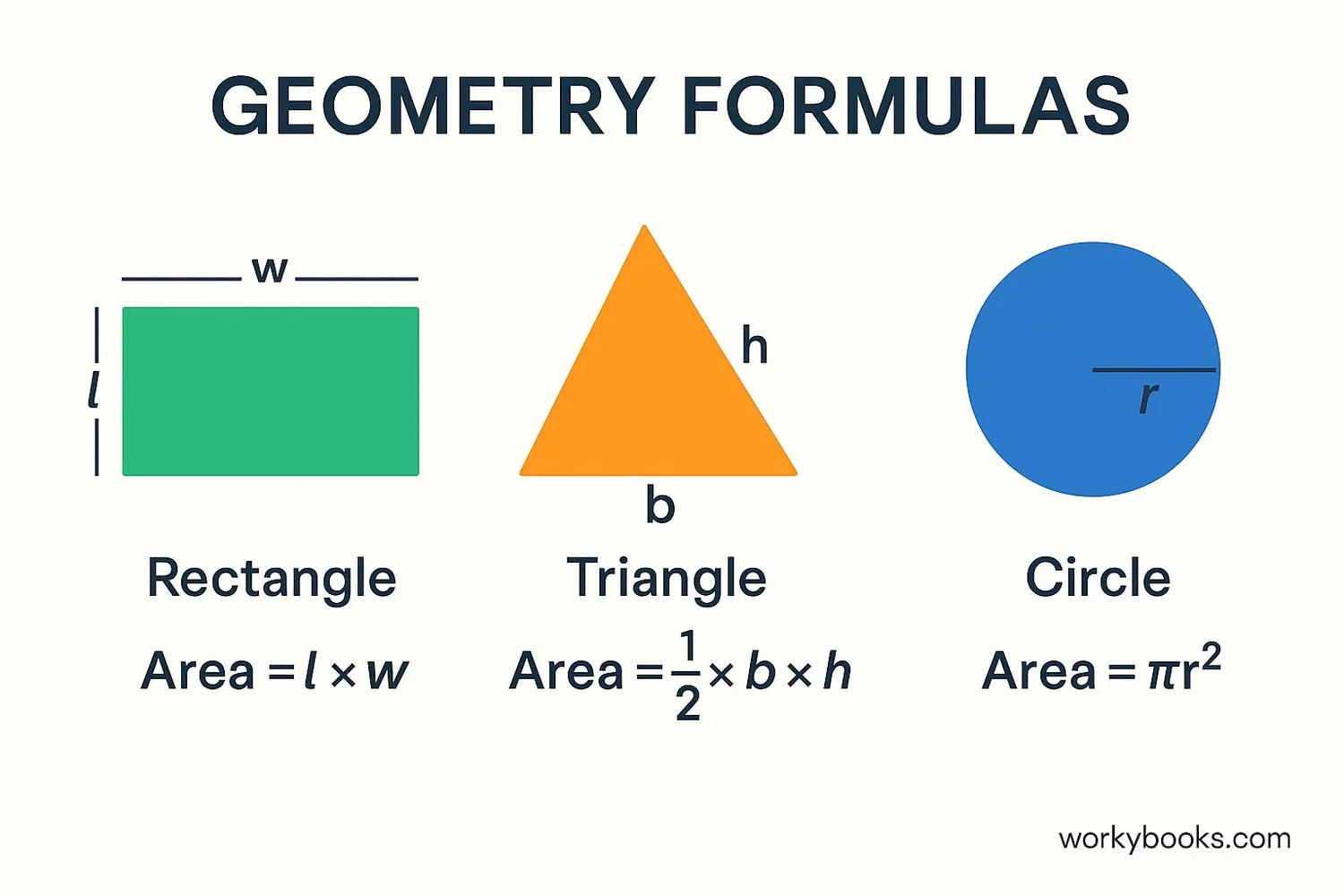Geometry - Definition, Examples, Quiz, FAQ, Trivia
Learn about shapes, angles, and spatial relationships with easy explanations and practice activities
What is Geometry?

Geometry is a branch of mathematics that studies the sizes, shapes, positions, angles, and dimensions of things. The word "geometry" comes from the Greek words "geo" meaning "earth" and "metron" meaning "measurement."
We use geometry every day without even realizing it! When you play with building blocks, put together a puzzle, or kick a ball, you're using geometry. It helps us understand the world around us and solve problems.
Geometry is important because it helps us:
- Understand how objects fit together
- Measure spaces and objects
- Create art and designs
- Build structures that are strong and stable
- Navigate using maps and directions
Key Concept
Geometry is the mathematics of shape, size, and space. It helps us describe and understand the world around us.
Basic Geometry Terms

Let's learn some basic geometry terms that will help you understand more complex concepts:
Remember
These basic terms are the building blocks of geometry. Understanding them will help you learn more complex concepts.
Key Geometry Concepts

Geometry includes many important concepts that help us describe and compare shapes. Here are some key ideas:
Symmetry
A shape has symmetry if it can be divided into two identical parts that are mirror images of each other. The line that divides the shape is called the line of symmetry.
Congruence
Congruent shapes have exactly the same size and shape. If you could cut them out and stack them, they would match perfectly.
Similarity
Similar shapes have the same shape but may be different sizes. Their angles are equal, and their sides are proportional.
Perimeter, Area, and Volume
Perimeter is the distance around a shape.
Area is the amount of space inside a flat shape.
Volume is the amount of space inside a 3D shape.
Real-World Connection
Architects use these concepts when designing buildings. Artists use symmetry to create balanced artwork. Engineers use area and volume to plan construction projects.
Types of Geometry

There are different ways to study geometry. Here are the main types you'll learn about:
Euclidean Geometry
This is the "regular" geometry we usually study. It's named after the ancient Greek mathematician Euclid. It deals with flat shapes and spaces, like points, lines, circles, and polygons.
Coordinate Geometry
This type of geometry uses numbers and algebra to study geometry. We place shapes on a coordinate grid (with x and y axes) to describe their positions mathematically.
Transformational Geometry
This studies how shapes can be changed through movements like: Translation (sliding), Rotation (turning), Reflection (flipping), and Dilation (resizing).
Solid Geometry
This branch of geometry deals with 3D shapes like cubes, spheres, cylinders, and pyramids. It studies their properties, including volume and surface area.
Did You Know
There are other types of geometry too, like projective geometry (how shapes look from different perspectives) and fractal geometry (patterns that repeat at different scales).
Geometry Formulas

Formulas help us calculate measurements of shapes. Here are some important geometry formulas:
Perimeter Formulas
| Shape | Formula |
|---|---|
| Rectangle | P = 2 × (length + width) |
| Square | P = 4 × side |
| Triangle | P = side₁ + side₂ + side₃ |
| Circle (Circumference) | C = 2 × π × radius |
Area Formulas
| Shape | Formula |
|---|---|
| Rectangle | A = length × width |
| Square | A = side × side |
| Triangle | A = ½ × base × height |
| Circle | A = π × radius² |
Volume Formulas
| Shape | Formula |
|---|---|
| Rectangular Prism | V = length × width × height |
| Cube | V = side × side × side |
| Cylinder | V = π × radius² × height |
| Sphere | V = 4/3 × π × radius³ |
Formula Tip
Remember that π (pi) is a special number approximately equal to 3.14. It represents the ratio of a circle's circumference to its diameter.
Geometry Practice Quiz
Test your geometry knowledge with this 5-question quiz. Choose the correct answer for each question.
Frequently Asked Questions
Here are answers to common questions about geometry:
Geometry Trivia
Discover interesting facts about geometry:
Ancient Origins
The earliest known use of geometry dates back to ancient Egypt around 3000 BCE. Egyptians used geometry to survey farmland after the annual flooding of the Nile River and to build the pyramids.
The Platonic Solids
There are only five 3D shapes where all faces are identical regular polygons, and the same number of faces meet at each vertex. These are called Platonic solids: tetrahedron, cube, octahedron, dodecahedron, and icosahedron.
Honeycomb Geometry
Honeybees build their honeycombs with hexagonal cells. This shape allows them to store the most honey using the least amount of wax. Mathematicians have proven that hexagons are the most efficient shape for this purpose.
Earth's Geometry
Although the Earth appears flat to us, ancient Greek mathematicians used geometry to calculate that it is actually spherical. Eratosthenes even calculated Earth's circumference around 240 BCE with remarkable accuracy using geometric principles.





